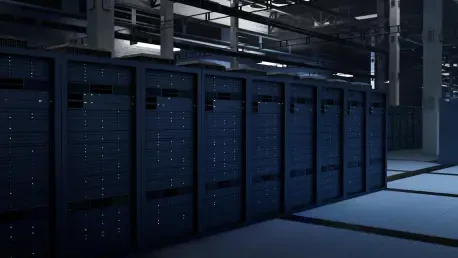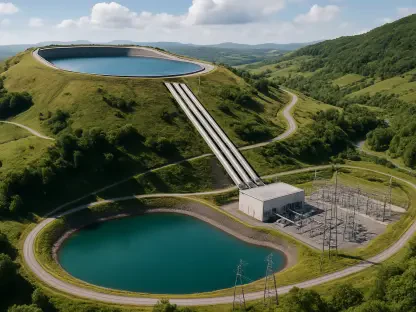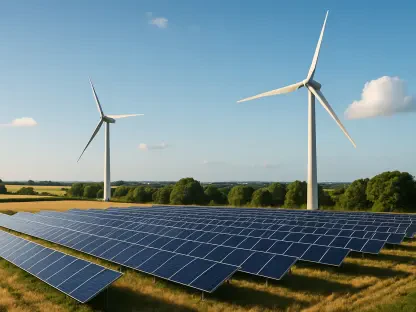What if the tech giants behind your favorite apps and AI tools could also cut your skyrocketing energy bills? In an era where data centers are multiplying to power the digital revolution, their massive electricity consumption is straining the grid and pushing household costs to unbearable levels, creating a staggering imbalance. Picture a single data center consuming as much power as a small city, while families struggle to keep the lights on. This raises a bold question: could these hyperscalers—major tech companies driving the AI boom—be the key to solving both their energy demands and your financial burdens by funding home energy upgrades?
The significance of this idea cannot be overstated. As electricity demand surges for the first time in decades, driven by data centers projected to need 93 gigawatts of new capacity by 2029, utilities face pressure to revert to fossil fuels, clashing with climate goals. Meanwhile, American households grapple with electricity prices rising at double the rate of inflation. A groundbreaking proposal suggests that tech giants could invest in residential electrification—think heat pumps and solar panels—unlocking grid capacity while slashing bills for families. This isn’t just a theory; it’s a potential lifeline for millions and a smarter path for the energy future.
The Energy Crisis Hitting Home: Why Tech Giants Hold the Key
The energy landscape is at a breaking point, with data centers at the heart of the storm. These facilities, powering everything from cloud storage to AI algorithms, are driving a historic spike in U.S. electricity demand—128 gigawatts by the end of this decade. This surge, after 20 years of flat consumption, has caught utilities off guard, often leading them to rely on coal or gas plants to fill the gap. The environmental cost is steep, undermining national commitments to reduce carbon emissions.
Households, meanwhile, bear the brunt of this crisis in a very personal way. Electricity prices have outpaced inflation, hitting low-income families hardest, with some spending nearly 18% of their income on energy. The frustration is palpable as bills climb, while the tech industry’s appetite for power seems insatiable. This disparity sets the stage for a radical rethink: why shouldn’t those creating the demand help alleviate the pain?
Grid Overload and Family Struggles: Connecting the Dots
Beyond the numbers, the strain on the electrical grid reveals a deeper inequity. Utilities, scrambling to meet the needs of hyperscalers, often prioritize corporate clients over residential stability, leaving communities vulnerable to blackouts or rate hikes. The reliance on outdated fossil fuel plants to bridge the gap only worsens air quality, adding health burdens to already stretched budgets.
For many Americans, the impact is immediate and unrelenting. A family in a small town might see their monthly energy costs soar, forcing tough choices between heating their home and buying groceries. This financial squeeze, tied directly to the energy demands of distant data centers, underscores a critical mismatch. It’s no longer just a utility issue—it’s a social one, demanding solutions that bridge the gap between corporate growth and community well-being.
A Bold Solution: Tech Giants as Partners in Home Energy
Imagine a world where data center operators don’t just consume power but help create it by funding residential upgrades. The proposal is straightforward yet transformative: hyperscalers should invest in electrification projects like heat pumps, rooftop solar, and battery storage for homes. Such initiatives could unlock 30 gigawatts of grid capacity by upgrading heating systems in 6.5 million homes, with broader investments potentially reaching 109 gigawatts—more than enough to meet tech’s projected needs.
The numbers make a compelling case. These upgrades cost $344 per kilowatt-year, nearly on par with the $315 cost of new gas plants, but with a crucial advantage: speed. While power plants take seven years to build, home improvements can roll out in a fraction of the time. States like Texas, with a potential 13.9 gigawatts, and Georgia, at 6.9 gigawatts, demonstrate how localized efforts could scale into a national game-changer.
This isn’t merely about capacity; it’s about equity. By redirecting resources toward homes, tech companies could ease the burden on families while meeting their own energy goals. It’s a win-win that flips the script, turning households from passive consumers into active grid contributors, and it challenges the industry to rethink its role in society.
Expert Insights and Real Lives: The Case for Change
The evidence backing this proposal is robust, drawing from detailed studies and lived experiences. According to Rewiring America’s “Homegrown Energy” report, residential upgrades could outstrip data center demands if prioritized. Ari Matusiak, CEO of the organization, puts it succinctly: “Households aren’t just a drain on the grid; they’re an untapped asset waiting to be activated.” This perspective shifts the narrative, framing homes as solutions rather than problems.
Consider the story of a low-income family in Pennsylvania, wrestling with energy bills that eat up a huge chunk of their budget. A funded heat pump installation could save them $740 a year, a lifeline that also cuts pollution. Scaled up, such upgrades could yield $2.3 billion in health benefits nationwide by reducing harmful emissions. These tangible impacts, paired with expert analysis, build a powerful argument for action.
The momentum isn’t just academic; it’s grounded in urgency. Energy policy experts increasingly agree that decentralized solutions like these are critical to avoiding a fossil fuel relapse. With public health and household finances on the line, the data and stories align to demand a new approach, one where tech giants step up as allies in the energy transition.
Building the Bridge: How Tech and Homes Can Collaborate
Turning this vision into reality requires a clear, actionable plan. Hyperscalers could start by partnering with utilities and local governments to fund electrification projects, leveraging bulk purchasing for discounts on installations. Targeting high-impact regions—states with heavy data center presence like Texas and Georgia—ensures maximum grid relief while addressing local needs efficiently.
Policy plays a pivotal role in smoothing the path. Governments could incentivize these investments by quantifying grid benefits, such as load-shifting or virtual power plants, and attaching financial rewards. This approach would encourage tech companies to see home upgrades as a strategic asset, not a charity, aligning corporate interests with public good.
Community engagement is equally vital to success. By framing hyperscalers as partners rather than profiteers, outreach efforts can counter public resentment over rising bills. Transparent communication about the benefits—lower costs, cleaner air, and a stronger grid—could foster trust, ensuring that this collaboration isn’t just a top-down fix but a shared mission. This blueprint offers a balanced strategy, uniting stakeholders around a common goal.
Reflecting on a Path Forward
Looking back, the energy crisis fueled by data center expansion has exposed stark vulnerabilities in the grid and deep inequities in household burdens. Discussions around hyperscaler-funded home upgrades have illuminated a promising alternative, one that pairs corporate responsibility with tangible benefits for families. The potential to unlock over 100 gigawatts of capacity while saving billions in health and energy costs has stood out as a beacon of innovation.
The next steps seem clear: policymakers need to craft incentives that reward grid-friendly investments, while tech giants must embrace their role as community partners. Pilot programs in key states could test the model, refining it for national rollout. Beyond immediate fixes, this approach hints at a broader shift toward a decentralized, all-electric future where homes and industry thrive together.
Ultimately, the challenge is to act swiftly, ensuring that the digital age doesn’t come at the expense of affordability or sustainability. Conversations have turned toward building coalitions—between utilities, governments, and tech—to fund and scale these upgrades. It is a moment that demands bold collaboration, with the promise of a more resilient energy system hanging in the balance.









